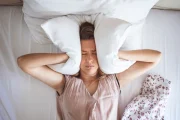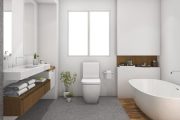Indoor air may be two to five times dirtier than outside air, so it’s no surprise that demand for air purifiers surges throughout the winter when the cold weather keeps us home with the windows closed. You may also be one of those who are considering an air purifier as a way to clean your indoor air but are still reluctant, wondering, “Are air purifiers expensive to run?” or “Are there any further costs that I don’t know?” If this is the case, then this post is for you, with all the information you need on air purifiers’ operation costs.
Note: If you need answers to common questions about air purifiers, please read our air purifier FAQs.
Related posts
Are air purifiers expensive to run? What are the hidden costs of air purifiers?
Whether an air purifier is expensive to run depends on how you use it and how much you consider “expensive,” especially given all the benefits an air purifier can give you. In general, the operation costs of air purifiers break down into replacement filters and electrical expenditures.
Does air purifier use a lot of electricity?
No. Common air purifiers don’t consume much electricity, often ranging from 20 to 100 watts (similar to a light bulb).
Their power consumption generally depends on the size and power of the unit. This means that the larger the size of your air purifier, the more electricity it will consume. Nevertheless, running the air purifier 24/7 doesn’t have a significant impact on its use of electricity.
The formula for estimating electricity usage is quite simple: (wattage x kWh cost x time (hours)) / 1000. This means if you use an average air purifier that has a 50-watt engine for all day (24 hours), and we assume that the average electricity price of a kilowatt per hour in the US is about $0.12, The cost of your air purifier will be (50 x 24 x 0.12) / 1000 = $0.144 per day.So, if the device will cost you around $4.32 per month and around $51.84 per year, This is quite affordable given the clean air you breathe every day, which saves you much more in curing potential illnesses that can be caused by pollutants.
In comparison, the power consumption of air purifiers is among the lowest of all household appliances. To put things in perspective, a standard television consumes 70 watts of electricity, refrigerators consume 200–300 watts, air conditioners consume 600 watts, and washing machines consume 2000 watts every hour.
Is replacing air purifier’s filter expensive?
Air purifiers are excellent at capturing dust, pollen, and pet hair that may be drifting around your home. Once captured, these particles are kept in the filter of your air purifier. These particles accumulate over time and reduce the performance of the air purifier. This may result in higher electricity consumption and shorter longevity. That is why it is critical to change your air purifier filters on a regular basis, following the manufacturer’s recommendations.
Typically, air purifiers’ filters are replaced once or twice a year. Each new filter can cost anywhere from $20 to over $200. Some types of air purifiers may have more than one filter to replace. Some air purifier filters are washable or reused if they are described as washable or permanent.
List of the best air purifiers
- 1, Best Air Purifiers (Air Purifier Ranking List)
- 2, Best Air Purifiers for Allergies and Asthma
- 3, Best Air Purifiers for Bedroom
- 4, Best Air Purifiers for Baby
- 5, Best Air Purifiers for Smoke
- 6, Best Air Purifiers for Dust
- 7, Best Air Purifiers for Mold
- 8, Best Large Room Air Purifiers
- 9, Best Air Purifiers for Pets
- 10, Best Air Purifiers for Office
How can I lower the cost of running an air purifier?
There are many things you can do to reduce the cost of running an air purifier:
- Turn off the power when not needed: If you are not home for an extended period of time, there’s no need to keep the air purifier running. Turn it off instead of keeping it on standby to save some money. In general, you should use your air purifier mostly at night because air purifiers help you sleep better by improving your breathing.
- Use lower speed: Running your air purifier at top speed is only necessary during seasons where allergies are common. For other times, lower speeds will serve you efficiently enough while consuming less electricity and hence costing less to operate. You can consider switching to automatic mode so the air purifier can adjust its speed according to the air quality in the room.
- Choose the air purifier that matches your needs: It’s important to understand your usage goal and room size to save money on running an air purifier. Do you need help with smoke, dust, or pollen? Choosing the most effective air purifier for your needs will save you time and money. Also, more features mean more electricity is required.
- Pay attention to your room size: A bigger air purifier doesn’t necessarily mean it’s better if it doesn’t match your room size. You’ll be wasting energy when using a too-powerful air purifier for a small room. At the same time, using a too-small air purifier is inefficient in a large room.
- Consider upgrading to a newer model: Your old air purifier may have worked well when it was new, but even the greatest systems lose efficacy over time. Upgrade to a newer model and take advantage of the most advanced energy-saving technologies to improve the performance of your air-purifying equipment.
- Clean your filters regularly: By keeping air purifier filters clean, the device will not have to work as hard to clean the air in the room. Working harder requires more electricity, which raises operating expenses.
- Use a fan to aid with air circulation: If you have a fan that is accessible and energy-efficient, why not use it for better air movement? This makes it easier for your air purifier to capture the dirty air and distribute clean air throughout the room.
- Keep your sensors clean: Sensors in modern air purifiers may assist in automating the supply of clean air. If your equipment has sensors, keep them clean and unobstructed so they don’t waste power.
RATING BREATHE QUALITY
-
Average ratings for this post



